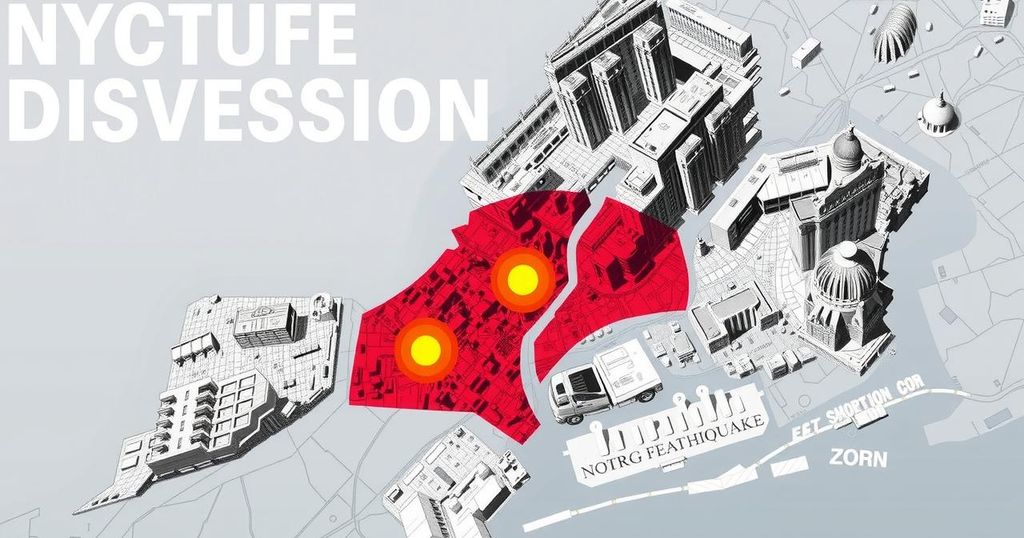Understanding the Impact of the 2023 NYC-Area Earthquake: Insights and Findings
A 4.8 magnitude earthquake in northern New Jersey last April was the strongest in the NYC metro area since 1884. Researchers attribute its widespread effects to the unusual geometry of the fault line, which caused seismic energy to reflect off dense rock before dispersing widely. The investigation into this unmapped fault line aims to improve risk assessments for future seismic events in the region.
A magnitude 4.8 earthquake struck Tewksbury Township, located in northern New Jersey, last April, marking the most significant seismic event in the New York City metropolitan area since 1884. This earthquake was notable not only for its magnitude but also for the extent of its impact; it resulted in damage to over 150 buildings in New York City and was felt across a widespread area, stretching as far as Maine and Virginia. Researchers, including seismologist Won-Young Kim from Columbia University, have begun to explore the reasons behind the earthquake’s extensive effects, hypothesizing that the peculiar geometry of the fault line caused the seismic energy to deviate from the norm. Instead of traveling directly towards the surface, the energy was directed downward, where it reflected off a dense rock layer near the Earth’s mantle. This phenomenon allowed shock waves to emanate back upward in all directions, consequently affecting a broader region than would typically be expected from a tremor of this size. Ongoing research aims to examine the previously unmapped fault line more thoroughly, contributing to future risk assessments for potentially similar events in the area.
The occurrence of earthquakes in places such as New Jersey, which are not typically associated with seismic activity, can significantly disrupt public perception of safety. The recent earthquake reflects a shift in understanding related to the geological dynamics underpinning such events. It provides an opportunity for scientists to study faults that were previously overlooked, emphasizing the need to reassess earthquake preparedness and risk management in densely populated urban environments like New York City. Understanding the mechanics behind how seismic energy travels through the Earth’s layers is crucial for predicting and mitigating future seismic risks.
The recent 4.8 magnitude earthquake in northern New Jersey has emphasized the unforeseen vulnerabilities within the New York City metro area regarding seismic activity. The research conducted by scientists highlights the complexity of underground geological dynamics and serves to enhance our understanding of fault lines that have gone largely unstudied. As more details about the fault line are uncovered, officials can better prepare for potential future earthquakes. Consequently, this reinforces the importance of seismic research in urban planning and disaster preparedness.
Original Source: magazine.columbia.edu




Post Comment